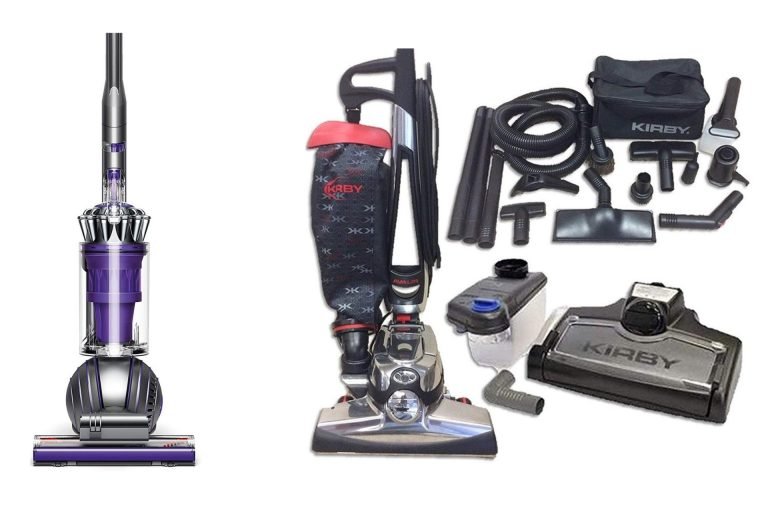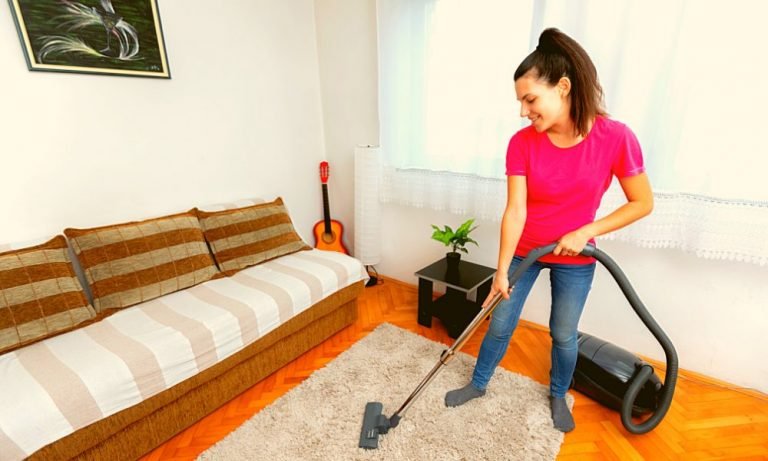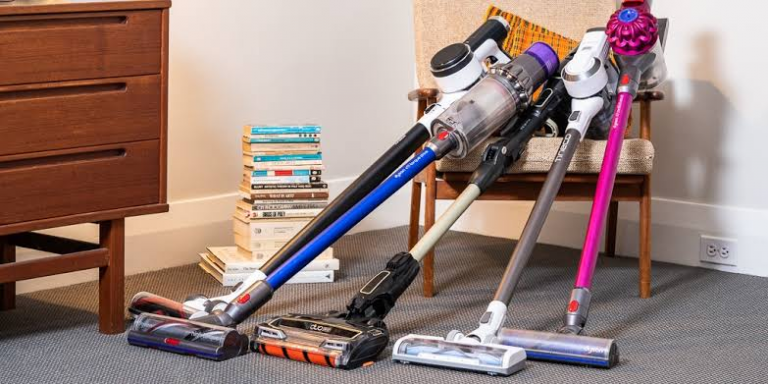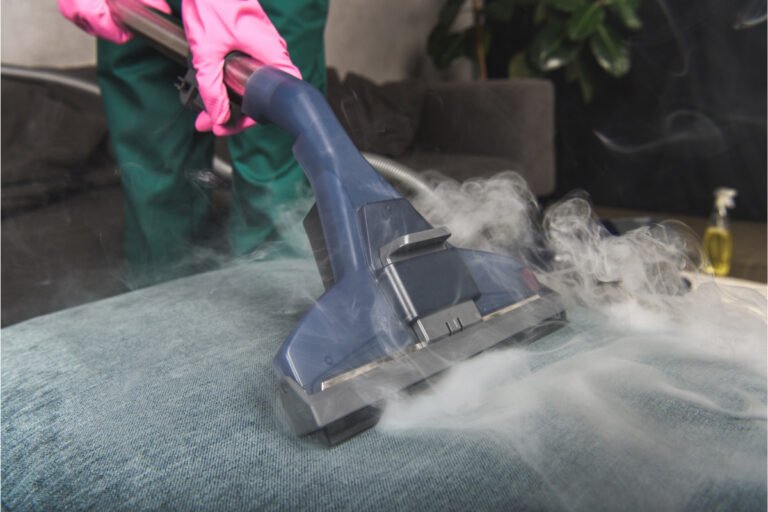A Step-By-Step Guide On How To Clean A Vacuum Cleaner Like A Pro

Have you noticed your vacuum cleaner losing suction over time? It seems to be asking for air, trying to catch even the smallest dust particle. Do not worry! We’ll talk about how to clean a vacuum cleaner today. That reliable appliance that keeps our houses clean needs some TLC, too.
You may be asking why vacuum cleaner cleaning is necessary. Its main duty is to clean for us, right? Regular cleaning is essential for your vacuum’s effectiveness, despite appearances. Dirt, debris, and hair can build up in your beloved machine, clogging its filters and reducing suction power. Thoroughly cleaning your vacuum keeps it working and extends its lifespan.
In this blog post, we’ll show you how to clean a vacuum cleaner professionally. Take out your beloved machine and let’s begin!
Why Clean a Vacuum Cleaner?

Cleaning a vacuum cleaner may not be the first thing that comes to mind when considering household chores. However, ensuring your vacuum cleaner functions efficiently and effectively is important. Below are some reasons why cleaning a vacuum cleaner is necessary.
❃Maintaining Optimal Performance:
Regularly cleaning your vacuum cleaner helps maintain its optimal performance. Over time, dust, dirt, and debris can accumulate in the vacuum’s filters, brushes, and other components. This buildup can restrict airflow and reduce suction power, making it less effective in picking up dirt and allergens. Cleaning your vacuum cleaner ensures it continues to work at its best, providing your family with a clean and healthy environment.
❃Preventing Allergies and Asthma:
A dirty vacuum cleaner can become a breeding ground for allergens such as dust mites, pet dander, and pollen. When these particles accumulate inside the vacuum, they can be released back into the air during vacuuming, causing allergies and triggering asthma symptoms. Regularly cleaning the filters and canisters of your vacuum helps remove these allergens, ensuring the air in your home remains clean and allergen-free.
❃Extending Lifespan:
Just like any other appliance, proper maintenance can significantly extend the lifespan of your vacuum cleaner. Cleaning the various components, such as the brush roll and hoses, prevents them from getting clogged or damaged. It reduces the strain on the motor and other internal parts, ensuring your vacuum lasts longer and saving you money in the long run.
❃Setting a Positive Example:
As parents, we must set a positive example for our teenagers. Caring for our household appliances, including the vacuum cleaner, instill a sense of responsibility and respect for our belongings. Cleaning the vacuum cleaner together can be an opportunity to teach teenagers about maintaining cleanliness in their personal spaces and promoting overall tidiness.
❃Promoting Safety:
A dirty vacuum cleaner can pose safety hazards, especially if not regularly maintained. The accumulation of dust and debris can increase the risk of overheating and potential fire hazards. By cleaning the filters and removing any obstructions, you ensure your vacuum operates safely, reducing the chances of accidents or damage to your home.
Regularly cleaning your vacuum cleaner is a simple yet essential task that significantly benefits your home and family.
Tools and Materials You’ll Need
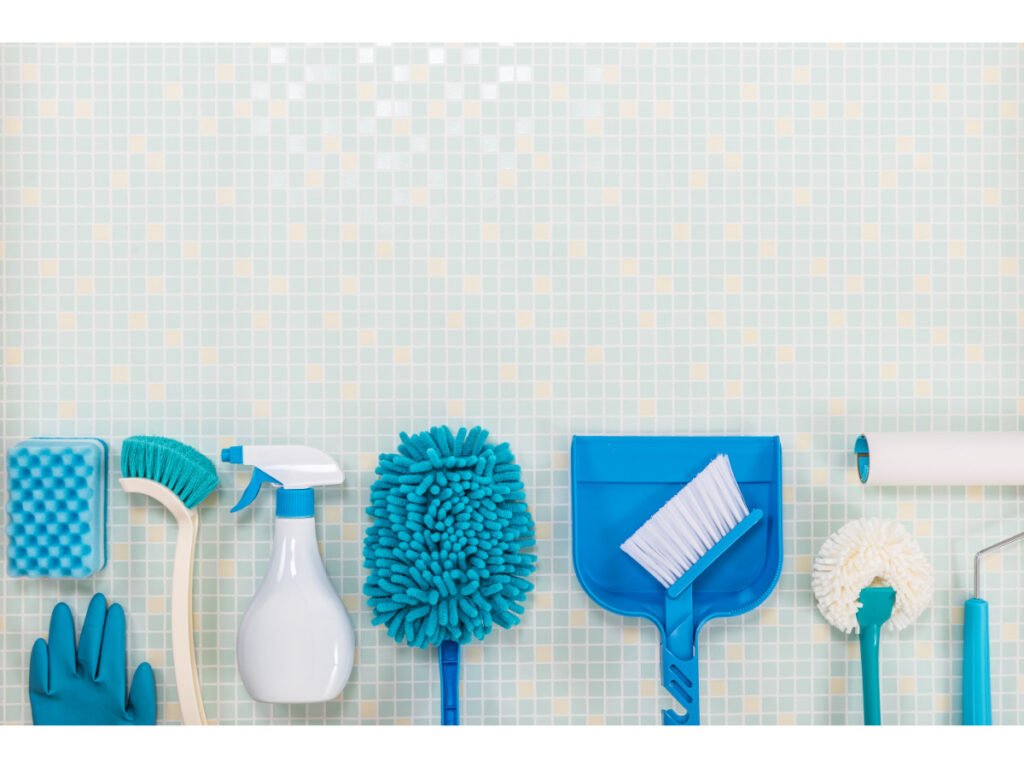
Before you begin the cleaning process, gathering all the necessary tools and materials is essential. Here are some items you’ll need:
- Vacuum cleaner: A reliable vacuum cleaner is necessary for any cleaning routine. Opt for one with versatile attachments to reach every nook and cranny.
- Dustpan and broom: Perfect for sweeping loose debris, a dustpan and broom combo is handy for quick cleanups.
- Microfiber cloths: These soft and absorbent cloths are ideal for dusting surfaces without leaving behind lint or scratches.
- Scrub brushes: Different sizes of scrub brushes will come in handy for tackling tough stains on various surfaces.
- Squeegee: For streak-free windows and mirrors, a squeegee is a game-changer.
- Gloves: Sturdy cleaning gloves protect your hands from harsh chemicals and dirt.
- Mop and bucket: A mop and bucket set is essential for keeping hard floors clean and shiny.
- Spray bottles: Fill spray bottles with water or specialized cleaning solutions for convenient application during cleaning.
Types of Cleaning Solutions Suitable for Different Parts
- All-purpose cleaner: An all-purpose cleaner is great for most surfaces like countertops, appliances, and tiles. Look for eco-friendly options without harsh chemicals.
- Glass cleaner: A specialized glass cleaner will leave windows, mirrors, and glass surfaces sparkling and streak-free.
- Wood cleaner: Choose a gentle wood cleaner for furniture and floors that nourishes and protects the surface.
- Stainless steel cleaner: Keep your stainless steel appliances shiny and fingerprint-free with a dedicated stainless steel cleaner.
- Tile and grout cleaner: To tackle stubborn dirt and mold in bathroom and kitchen tiles, opt for a specialized tile and grout cleaner.
Alternatives for Those Preferring Natural or DIY Cleaning Solutions
- Vinegar and water solution: Mix equal parts vinegar and water for an effective and natural all-purpose cleaner.
- Baking soda paste: Mix baking soda with water to tackle tough stains or scrub surfaces gently.
- Lemon juice: Lemon juice works wonders as a natural degreaser and can remove stains and freshen up surfaces.
- Essential oils: Add a few drops of your favorite essential oil to create a pleasant scent while cleaning.
- DIY cleaning recipes: Explore homemade cleaning recipes using ingredients like vinegar, baking soda, and essential oils for a more eco-friendly approach.
So gather your supplies, put on your gloves, and get ready to clean a vacuum cleaner in the next section.
Step-by-Step Guide on How to Clean a Vacuum Cleaner
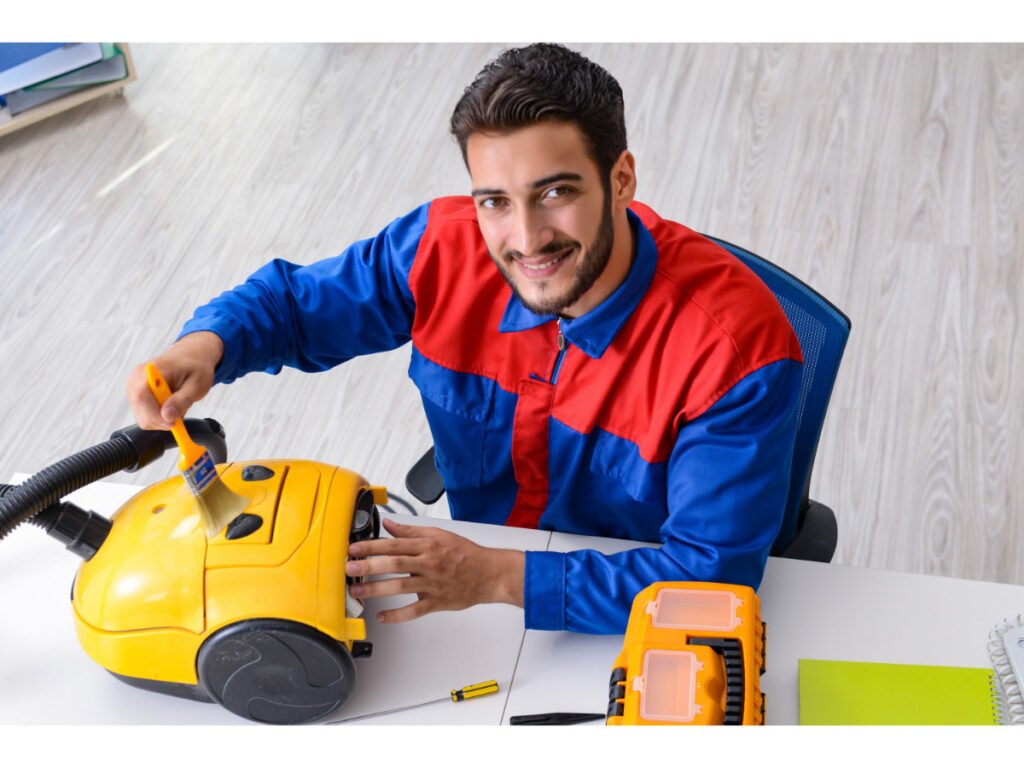
Now that you have all your cleaning supplies ready, it’s time to tackle cleaning a vacuum cleaner. Follow these straightforward steps for a thorough and efficient clean:
➤Unplugging and Ensuring Safety:
Before starting any maintenance on your vacuum cleaner, unplugging it from the power source is crucial to prevent any potential accidents. Safety should always be a priority when working with electrical appliances. Once unplugged, ensure that the vacuum cleaner is completely powered off and all moving parts have come to a stop.
➤Emptying the Dustbin or Replacing the Vacuum Bag:
If your vacuum cleaner has a dustbin, start by removing it carefully. Take the dustbin outside or over a trash can and empty its contents. Be sure to dispose of the debris properly, following your local waste management guidelines. If your vacuum cleaner uses a bag, carefully remove it and replace it with a new one according to the manufacturer’s instructions. Keeping the dustbin or bag clean and empty will prevent clogs and maintain optimal suction power.
➤Cleaning or Replacing the Filters:
Filters are crucial in trapping dirt and allergens, ensuring that only clean air is released back into your home. Over time, filters can become clogged and lose their effectiveness. Here’s how to clean or replace different types of filters commonly found in vacuum cleaners:
- HEPA Filters: HEPA (High-Efficiency Particulate Air) filters are known for their superior filtration capabilities. To clean a HEPA filter, gently tap it against a trash can to dislodge any loose dirt and dust. Depending on the manufacturer’s instructions, you may be able to rinse the filter under running water or use a soft brush to remove stubborn debris. Allow the filter to dry completely before reinserting it into the vacuum cleaner. If the HEPA filter is damaged or worn out, replacing it with a new one is recommended.
- Foam Filters: Foam filters are commonly found in many vacuum cleaners and are often washable. Remove the foam filter from the vacuum cleaner and rinse it under cool running water. Use a mild detergent if necessary to remove stubborn dirt. Thoroughly squeeze out excess water and allow the filter to air dry completely before placing it back into the vacuum cleaner. If the foam filter is torn or deteriorated, replacing it with a new one is advisable.
➤Checking and Cleaning the Brush Roll:
The brush roll is an essential component of your vacuum cleaner that helps agitate and lift dirt from carpets and rugs. Over time, it can become clogged with hair, fibers, and debris, hindering its effectiveness. Here’s how to clean the brush roll:
- Turn off and unplug your vacuum cleaner.
- Locate the brush roll beneath the vacuum head and remove any visible debris using your hands or scissors.
- Use a clean cloth or a toothbrush to brush away any remaining dirt or hair gently.
- If the brush roll is removable, take it out and wash it with warm, soapy water. Ensure it is completely dry before reattaching it to the vacuum cleaner.
➤Inspecting and Cleaning the Hoses and Attachments:
The hoses and attachments of your vacuum cleaner are prone to collecting dirt, dust, and debris. Regular cleaning is necessary to maintain their functionality. Follow these steps:
- Detach the hoses and attachments from the vacuum cleaner.
- Inspect them for any visible blockages or clogs. Use a long, flexible brush or a straightened wire hanger to remove obstructions.
- Rinse the hoses and attachments with warm water and mild detergent.
- Thoroughly dry them before reattaching them to the vacuum cleaner.
➤Wiping Down the Exterior of the Vacuum:
While cleaning the internal components of your vacuum cleaner is vital, it’s equally important to clean the exterior. Dust and grime can accumulate on the surface, affecting its appearance and cleanliness. Follow these steps to wipe down the exterior:
- Use a soft, damp cloth to remove dust or dirt from the vacuum cleaner’s body.
- For stubborn stains or sticky residue, dampen the cloth with a mild cleaning solution and gently scrub the affected areas.
- Dry the exterior thoroughly with a clean cloth.
Following this step-by-step guide, which includes checking and cleaning the brush roll, inspecting and cleaning the hoses and attachments, and wiping down the exterior, you can keep your vacuum cleaner in excellent condition.
How Often Should You Clean Your Vacuum Cleaner?
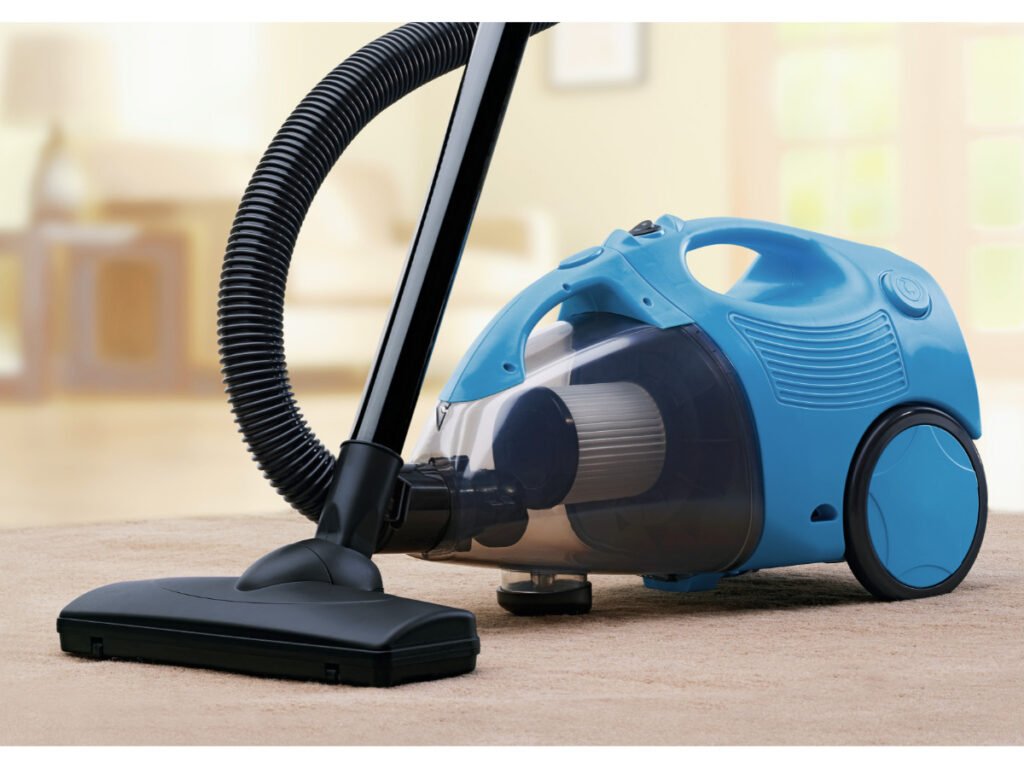
Regularly cleaning your vacuum cleaner is essential to maintain its performance and ensure effective cleaning. However, the frequency with which you should clean your vacuum depends on various factors.
➭Frequency of Use:
The amount of time you use your vacuum cleaner plays a significant role in determining how often it should be cleaned. If you use your vacuum cleaner frequently, such as multiple times a week, it is recommended to clean it more frequently as well. On the other hand, if you use it less often, you may only need to clean it less frequently.
➭Size of Living Area:
The size of your living area also affects how often you should clean your vacuum cleaner. If you have a large home with multiple rooms, you may need to clean your vacuum more often to maintain efficiency. Conversely, if you have a smaller living space, you can clean your vacuum less frequently.
➭Type of Flooring:
Different types of flooring require different levels of maintenance. If you have carpeted floors, they tend to accumulate more dirt, dust, and debris, necessitating more frequent cleaning of your vacuum cleaner. Hardwood or tile floors may accumulate less debris, allowing for less frequent cleaning.
➭Presence of Pets:
If you have pets, especially those that shed fur or dander, cleaning your vacuum cleaner more frequently is advisable. Pet hair can quickly clog the filters and reduce suction power. Regular cleaning will help prevent clogs and maintain optimal performance.
➭Manufacturer’s Recommendations:
It’s essential to consult the manufacturer’s instructions and guidelines for your specific vacuum cleaner model. Manufacturers often recommend how often you should clean and maintain their products. Following their guidelines will ensure that you maintain the warranty and get the best performance from your vacuum cleaner.
Regularly cleaning your vacuum cleaner ensures its longevity and optimal performance, allowing for effective and efficient cleaning in your home. Remember that a well-maintained vacuum cleaner will provide thorough and consistent results, keeping your living space clean and fresh.
Pro Tips for Vacuum Cleaner Maintenance
Proper maintenance is essential for keeping your vacuum cleaner running efficiently and prolonging its lifespan. This guide will share valuable tips to help you maintain your vacuum cleaner effectively. By following these pro tips, you can ensure that your vacuum cleaner continues to provide optimal performance and keeps your home clean and dust-free.
✔️Maximizing the Lifespan of Filters and Bags:
Filters and bags are crucial components of a vacuum cleaner that trap dirt, dust, and allergens. To maximize their lifespan and maintain efficient cleaning, consider these tips:
- Regularly clean or replace filters: Depending on your vacuum cleaner’s filter, it’s important to clean or replace them as the manufacturer recommends. It will prevent clogs and maintain optimal suction power.
- Empty the dustbin or replace bags frequently: A full dustbin or bag can reduce suction and strain the motor. Empty the dustbin or replace bags at approximately two-thirds full to ensure optimal cleaning performance.
- Use high-quality filters and bags: Opt for those specifically designed for your vacuum cleaner model. These will effectively trap particles and improve your home’s air quality.
✔️Storing the Vacuum Properly:
Proper storage of your vacuum cleaner when not in use is essential for its longevity. Follow these tips to ensure your vacuum cleaner stays in good condition:
- Store in a clean and dry area: Avoid storing your vacuum cleaner in damp or humid areas, as moisture can damage the internal components. Choose a clean and dry spot to keep it safe and protected.
- Keep attachments organized: Store all attachments and accessories in a designated space or bag to prevent loss or damage. It will also make them easily accessible when needed.
- Protect the power cord: Gently coil and secure the cord with a twist tie or cord winder to prevent tangles or damage. Avoid tightly wrapping the cord around the vacuum cleaner, as it can strain the cord and lead to breakage.
These simple steps will help extend the life of your vacuum cleaner and ensure it continues to work efficiently. Regular maintenance and proper storage are key to keeping your vacuum cleaner running smoothly for years.
Recognizing Signs that Indicate the Need for Professional Servicing

While regular maintenance is essential, there are instances when professional servicing is necessary. Look out for these signs that indicate your vacuum cleaner requires professional attention:
- Loss of suction power: If your vacuum cleaner consistently lacks suction power, even after cleaning filters and removing clogs, it may require professional servicing to identify and fix the underlying issue.
- Unusual noises or smells: Strange noises or unpleasant odors during operation can signify mechanical problems or an accumulation of debris within the vacuum cleaner. Professional servicing can help diagnose and resolve these issues.
- Motor overheating: If you notice that your vacuum cleaner’s motor becomes excessively hot during use, it may indicate a problem that requires professional examination and repair. Using a vacuum cleaner with an overheating motor can cause further damage and pose a safety hazard.
- Brush roll not rotating: The brush roll is responsible for picking up dirt and debris from carpets and rugs. If it stops rotating, it may indicate a problem that requires professional attention, such as worn-out belts or a clogged brush roll.
If you notice any of these signs, you should stop using your vacuum cleaner and seek professional servicing. Attempting to use a malfunctioning vacuum cleaner can cause further damage and pose a safety risk.
Frequently Asked Questions
Is it safe to wipe down the exterior of my vacuum cleaner with water or cleaning solutions?
Yes, it is generally safe to wipe down the exterior of your vacuum cleaner with a damp cloth and mild cleaning solution. However, avoid getting water inside the vacuum cleaner’s motor or controls, which can cause damage. Always refer to the manufacturer’s instructions for specific cleaning recommendations.
What are the signs that indicate my vacuum cleaner needs a thorough cleaning?
Signs that indicate your vacuum cleaner may need a thorough cleaning include reduced suction power, a persistent odor when using the vacuum, or visual debris buildup in the dustbin or bag. If you notice any of these signs, cleaning your vacuum cleaner thoroughly to maintain its performance is a good idea.
How do I troubleshoot strange noises coming from my vacuum cleaner?
To troubleshoot strange noises coming from your vacuum cleaner:
- Start by checking for loose attachments or accessories.
- Ensure that the brush roll is free from debris or obstructions.
- If the noise persists, consult the manufacturer’s instructions or seek professional help to diagnose and resolve the issue.
Can I vacuum liquids, and how do I clean the vacuum if I accidentally do it?
In general, it is not recommended to vacuum liquids with a standard vacuum cleaner designed for dry use only. Liquids can damage the motor and other components. If you accidentally vacuum liquids, immediately unplug the vacuum cleaner and consult the manufacturer’s instructions for guidance on cleaning and drying the unit.
Can I replace parts of my vacuum cleaner alone, or should I seek professional help?
Many vacuum cleaner parts, such as filters, belts, and brush rolls, can be replaced by the owner. Consult the manufacturer’s instructions or website for guidance on replacing specific parts. However, it is best to seek professional help to ensure proper and safe repairs for more complex issues or repairs involving the motor or electrical components.
Final Words
In conclusion, learning to clean a vacuum cleaner has been a game-changer. Not only has it improved the suction power, but it has also eliminated any funky smells that had been wafting through my home. I can now deep clean every nook and cranny, leaving me with a sense of satisfaction that cannot be matched.
It’s amazing to think that something as simple as cleaning your vacuum can make such a difference in the cleanliness of your home. I highly recommend everyone take the time to learn how to clean a vacuum cleaner for a happier home.

